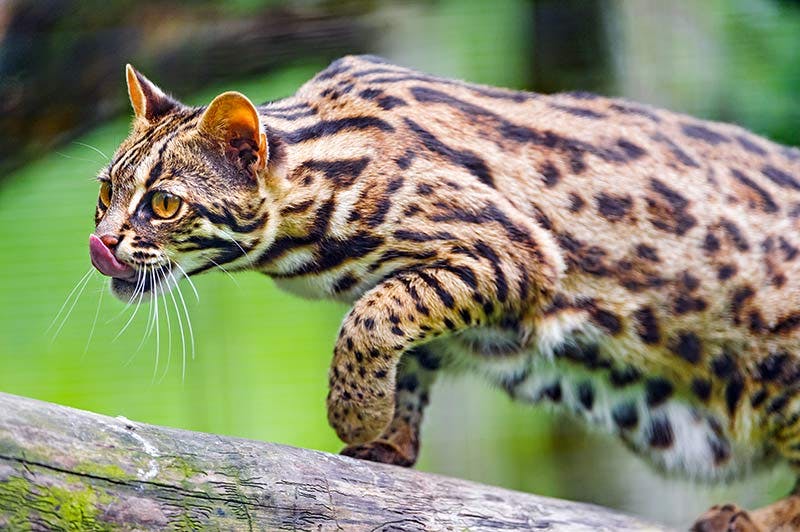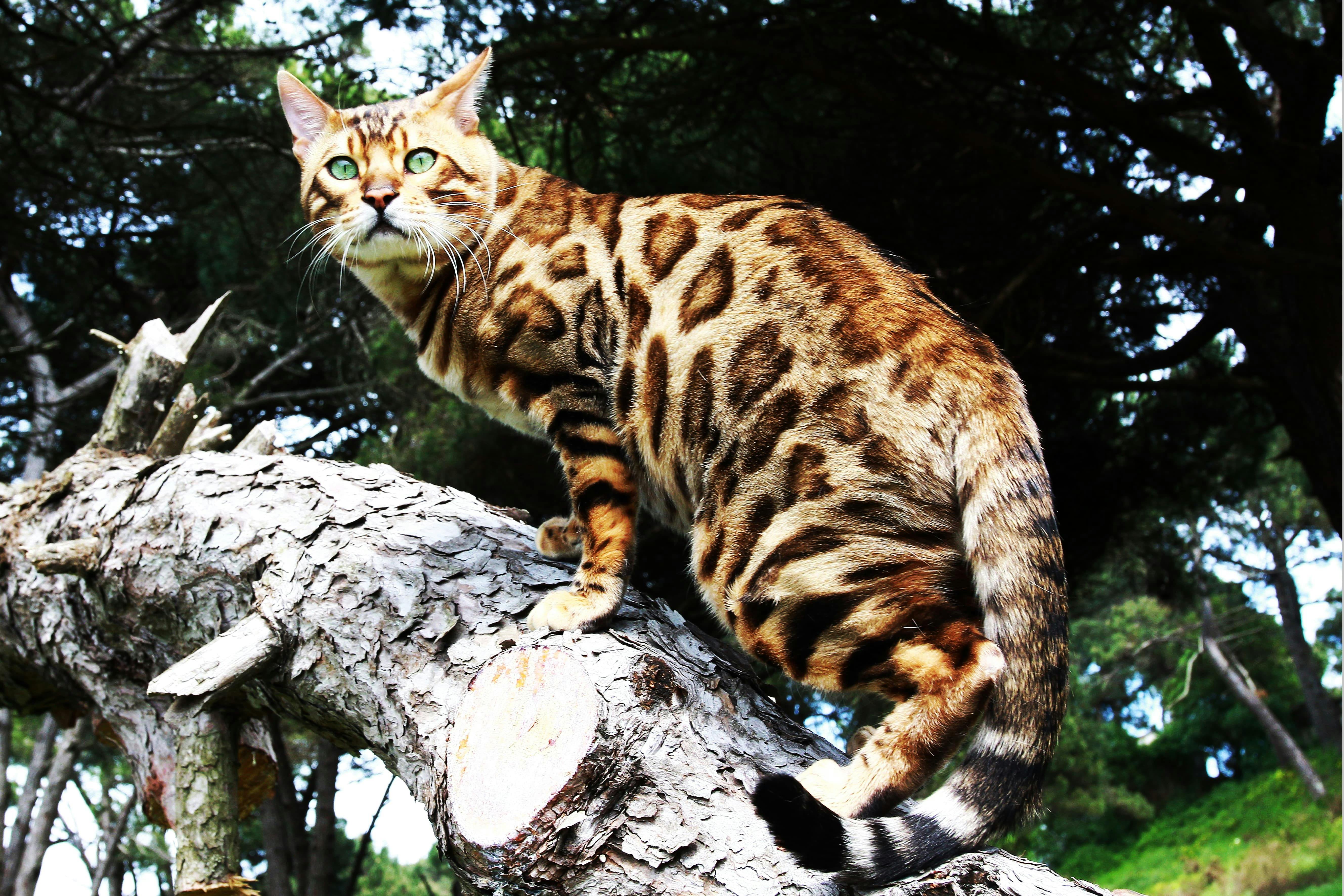The Origin of the Bengal Cat
The Bengal cat originated in the U.S. This emerged from the cross between a wild feline, Felix prionairilus bengalesis, with a domestic cat of the American shorthair breed.
The origin of this breed was the result of a hybridization project, carried out by geneticist Mrs. Jean Sudgen Mill.
1960s - Jean Mill crossed an Asian Leopard female with a domestic cat. From this crossing were born two chicks, with only one of them (the female) surviving and was called "Kinkin". Kinkin was the first hybrid copy of the F1 generation.

1970s - Early in this decade, William Engler also performed crosses between Asian leopards and domestic cats, primarily working on first-generation (F1) cats.
At this point, the geneticist, Dr. Willard Centerwall, performed the same cross-breeding process, to find the gene that allowed these animals to become immune to feline leukemia. Some time later, he suspended his research by donating some first-generation females to Mrs. Jean Mill.
In this way, she obtained the first F1 descendants of the Asian Leopard, known as "Centerwall ALC", with domestic short haired females.
The most notable and well-known were: Millwood Praline, Millwood Pennybank and Millwood Rorchach.

1984 - Jean Mill imported from India a beautiful domestic cat that had rich orange coloration with very dark spots and rosettes to be used in a new breeding and breeding program with the aim of introducing a new and different blood line. This cat became known and was called the "Millwood Tory of Delhi", being used in breeding primarily with first generation (F1) females.
"Delhi" had a remarkable contribution to the breed with its magnificent color, small dark specks spread across the body, golden and shiny coat, and its beautiful green eyes.
1985 - Jean Mill presented the first Bengals at TICA exhibitions.
1989 - The breed standard was drawn up
1991 - The breed has been officially accepted by TICA (The International Cat Association) for registrations and exhibitions and today this breed is recognized by the major international breeders organizations and ranks among the ten most popular breeds in the US and Europe.
The first three generations from crosses of Asian Leopards and domestic cats, are called Bengals of foundation and are these:
• F1 - specimens born from a cross between the ALC and a domestic cat.
• F2 - copies resulting from the crossing between an F1 and a domestic cat.
• F3 - specimens born from the cross between an F2 and a domestic cat.
Bengal is only really considered a Bengal from the F4 generation, when it already has a docile temperament typical of domestic cats.
Bengal Cat
Bengals are usually confident and dedicated companions. They get along well with other pets when introduced correctly and like to be part of a family. Active and interactive, the Bengal are curious and athletic and maintain a kitten-like energy and attitude in their early years.
These affectionate cats engage the owners in play, learn tricks, learn domestic rules or just enjoy being around. Some Bengals are usually talkative, while others prefer to wait for the right moment to communicate. Many Bengal cats have an affinity for water and like to brush their teeth while others like to join us in the shower.
The charm of Bengal's personality can only be eclipsed by its beauty. While the most recognizable color and pattern is the brown spotted tabby, reminiscent of a Leopard-like color and pattern.